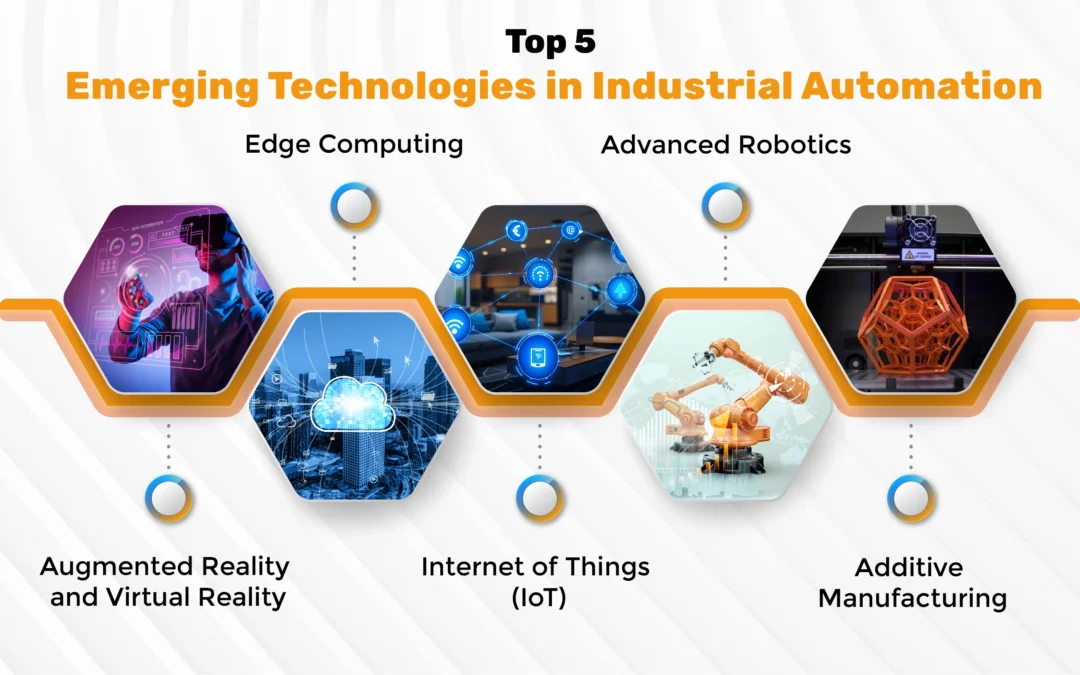In the dynamic landscape of industrial automation, technological advancements are continuously reshaping the way businesses operate and driving unprecedented innovation. From the adoption of Internet of Things (IoT) to the integration of Augmented Reality (AR) and Virtual Reality (VR), manufacturers are leveraging emerging technologies to optimize processes, enhance efficiency, and stay ahead of the competition.
Internet of Things (IoT): Revolutionizing Manufacturing Industry 4.0
The Internet of Things (IoT) has emerged as a game-changer in the manufacturing sector, driving the concept of Industry 4.0 to new heights. By connecting devices and machinery to the internet, IoT enables real-time monitoring, predictive maintenance, and supply chain optimization. Manufacturers can leverage IoT to improve operational efficiency, streamline inventory management, and enhance quality control. With the power of data analytics, IoT empowers businesses to make informed decisions, drive continuous improvement, and achieve greater levels of productivity.
Additive Manufacturing: Transforming Production Processes
Additive manufacturing, also known as 3D printing, has revolutionized the way products are designed and produced. By layering materials to create three-dimensional objects, additive manufacturing offers unparalleled flexibility and customization. Manufacturers can rapidly prototype new designs, produce complex geometries, and reduce waste in the production process. Additive manufacturing enables on-demand production, shortening time-to-market and increasing operational flexibility. With its ability to create lightweight components and customized products, additive manufacturing is driving innovation across various industries, from aerospace to healthcare.
Advanced Robotics: Precision and Efficiency in Automation
Advanced robotics is at the forefront of industrial automation, enabling robots to perform complex tasks with precision and efficiency. From sensors and artificial intelligence to motion control and human-robot interaction, advanced robotics encompasses a wide range of technologies and capabilities. Robots equipped with advanced sensors and perception systems can navigate dynamic environments, recognize objects, and make intelligent decisions. With the integration of artificial intelligence and machine learning, robots can adapt to new situations, learn from their experiences, and optimize their performance over time. Advanced robotics is revolutionizing manufacturing processes, enhancing safety, and increasing productivity in diverse industrial settings.
Edge Computing: Real-time Data Processing at the Network Edge
Edge computing has emerged as a transformative technology in industrial automation, enabling real-time data processing and analysis at the network edge. By processing data closer to its source, edge computing reduces latency, enhances responsiveness, and optimizes bandwidth usage. Manufacturers can leverage edge computing to deploy applications and services closer to their operations, ensuring faster response times and improved reliability. With its ability to handle data-intensive tasks locally, edge computing enables real-time decision-making, enhances operational efficiency, and creates a more agile and resilient business ecosystem.
Augmented Reality and Virtual Reality (AR/VR): Immersive Technologies for Enhanced Collaboration
Augmented Reality (AR) and Virtual Reality (VR) are immersive technologies that are transforming the way manufacturers interact with their environments. From training and simulation to maintenance and repair, AR and VR offer a wide range of applications in industrial automation. AR enables workers to overlay digital information onto the physical world, providing real-time instructions and visualizations. VR creates fully immersive, computer-generated environments, allowing users to experience scenarios that would be impossible or impractical in the real world. By integrating AR and VR into their operations, manufacturers can enhance training programs, improve collaboration, and streamline maintenance and repair processes.
These top five emerging technologies are reshaping the future of industrial automation, driving innovation, and unlocking new possibilities for manufacturers worldwide. By embracing these technologies, businesses can optimize processes, enhance efficiency, and stay competitive in today’s dynamic and rapidly evolving market landscape. As we continue to push the boundaries of technological innovation, the potential for transformation in industrial automation is limitless. Embracing innovation is key to staying ahead of the curve and thriving in the digital age of manufacturing.

